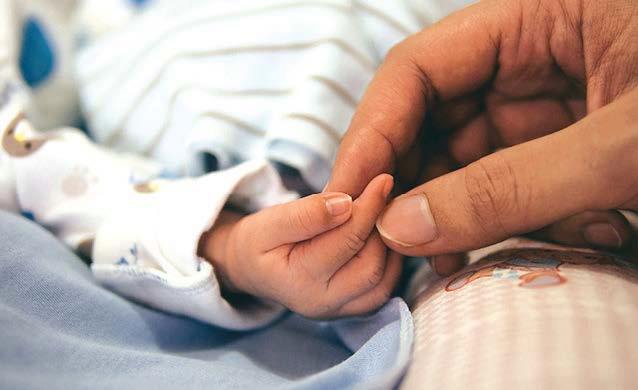THE five-year-old political ban on Government advertising in The Namibian is apparently still in place.
This has emerged after a tender for Government advertising was cancelled and later re-advertised by the Tender Board’s Miriam Onesmus after The Namibian was the only bidder for the contract last year. The initial ban was imposed under the hand of former President Sam Nujoma on 5 December 2000, when Cabinet approved the move on grounds of the newspaper’s alleged ‘anti-government stance’.It followed strident calls in November 2000 to this effect from the then Swapo Youth League Secretary General Paulus Kapia.Whether a Cabinet Action Letter – the legal instrument that makes Cabinet decisions official policy – was ever issued at the time remains unclear but former Permanent Secretary of Information and Broadcasting Mocks Shivute then confirmed the political ban.In early 2001, several ministries put out circulars to remind staff to heed the Cabinet decision “with immediate effect”.One such circular noted that the Cabinet Resolution “compels Government ministries, offices and agencies to refrain from advertising in The Namibian newspaper because of its anti-government stance and unwarranted criticism of Government policies.”The ban was slammed by the likes of MISA (Media Institute of Southern Africa) as an “economic sanction” aimed at stifling the freedom of the press.With Hifikepunye Pohamba taking over as President from Sam Nujoma last year and a ‘new’ Government in place, it appeared as if this political ban would be lifted or at least ignored, Editor of The Namibian Gwen Lister said.But when the two-year tender for carrying Government advertising (Annual Tender A17-2/2005) for the period 1 November 2005 to 31 October 2007 was issued late last year, the ban was again enforced by the Tender Board’s Secretary, Miriam Onesmus.In the preamble to the tender conditions, Onesmus noted: “Cabinet decisions on banned newspapers and agencies shall have bearing on this tender.”Which banned newspaper and agencies were meant by this remained unclear – Permanent Secretary of Finance Calle Schlettwein was locked in a meeting with his superiors and could not be reached for comment today.The Namibian nevertheless tendered by the deadline of November 1 last year and was the only newspaper to submit its bid on time.Sources at the Tender Board later said that the New Era bid was late, and the daily Afrikaans newspaper, Die Republikein, had not submitted a tender.On November 22 2005 the sole tenderer, The Namibian, was informed that the tender in question had been cancelled and would be re-advertised at a later stage.When asked in writing for reasons, Tender Board Secretary Onesmus ruled that all newspapers had failed to meet the tender specifications and in a letter to The Namibian dated December 8 2005, she wrote: “The tender in question has not been awarded to any tendering company, therefore no reasons for rejection or acceptance can be provided.The tender was cancelled as all tenderers did not meet the conditions and requirements of the tender.”The same tender was in fact re-advertised in Die Republikein a few weeks ago, with the closing date today, February 7.The Namibian has not re-submitted its bid, as no reasons were furnished for its rejection last November, and this could only mean the Government ban on advertising remained in force, said Lister.Prime Minister Nahas Angula, who referred the matter to the Ministry of Finance, yesterday said he was not aware of any banned newspapers or news agencies.Banning any publication for any reason apart from hate speech would at any rate be legally most difficult, as freedom of the media is enshrined in the Bill of Human Rights in the Namibian Constitution.”But I am not aware of any newspaper of agency being banned,” he stressed.The tender specifically excluded weekly publications such the Tender Board Bulletin and the Windhoek Observer.Government tenders have, in the meantime, continued to be placed in the Afrikaans daily as well as the Government publication, New Era.Government advertising is also regularly placed in the Swapo Party mouthpiece, Namibia Today – which is a weekly publication.The Namibian’s Advertising Manager, Gregory Goeda, said the newspaper had complied with every tender specification and condition, including audited proof of circulation figures, original Certificate of Good Standing from the Social Security Commission and a certified copy of the Affirmative Action Compliance Certificate.Surveys done by the Namibia All Media and Product Survey (NAMPS) showed that every copy of The Namibian was read by an average of 10 people, reaching across all sectors of society.”This means that we reach on average 330 000 people from Monday to Thursday, and as many as 470 000 people on Fridays,” Goeda said.* John Grobler is a freelance journalist; 081 240 1587The initial ban was imposed under the hand of former President Sam Nujoma on 5 December 2000, when Cabinet approved the move on grounds of the newspaper’s alleged ‘anti-government stance’.It followed strident calls in November 2000 to this effect from the then Swapo Youth League Secretary General Paulus Kapia.Whether a Cabinet Action Letter – the legal instrument that makes Cabinet decisions official policy – was ever issued at the time remains unclear but former Permanent Secretary of Information and Broadcasting Mocks Shivute then confirmed the political ban.In early 2001, several ministries put out circulars to remind staff to heed the Cabinet decision “with immediate effect”.One such circular noted that the Cabinet Resolution “compels Government ministries, offices and agencies to refrain from advertising in The Namibian newspaper because of its anti-government stance and unwarranted criticism of Government policies.”The ban was slammed by the likes of MISA (Media Institute of Southern Africa) as an “economic sanction” aimed at stifling the freedom of the press.With Hifikepunye Pohamba taking over as President from Sam Nujoma last year and a ‘new’ Government in place, it appeared as if this political ban would be lifted or at least ignored, Editor of The Namibian Gwen Lister said.But when the two-year tender for carrying Government advertising (Annual Tender A17-2/2005) for the period 1 November 2005 to 31 October 2007 was issued late last year, the ban was again enforced by the Tender Board’s Secretary, Miriam Onesmus.In the preamble to the tender conditions, Onesmus noted: “Cabinet decisions on banned newspapers and agencies shall have bearing on this tender.”Which banned newspaper and agencies were meant by this remained unclear – Permanent Secretary of Finance Calle Schlettwein was locked in a meeting with his superiors and could not be reached for comment today.The Namibian nevertheless tendered by the deadline of November 1 last year and was the only newspaper to submit its bid on time.Sources at the Tender Board later said that the New Era bid was late, and the daily Afrikaans newspaper, Die Republikein, had not submitted a tender.On November 22 2005 the sole tenderer, The Namibian, was informed that the tender in question had been cancelled and would be re-advertised at a later stage.When asked in writing for reasons, Tender Board Secretary Onesmus ruled that all newspapers had failed to meet the tender specifications and in a letter to The Namibian dated December 8 2005, she wrote: “The tender in question has not been awarded to any tendering company, therefore no reasons for rejection or acceptance can be provided.The tender was cancelled as all tenderers did not meet the conditions and requirements of the tender.”The same tender was in fact re-advertised in Die Republikein a few weeks ago, with the closing date today, February 7.The Namibian has not re-submitted its bid, as no reasons were furnished for its rejection last November, and this could only mean the Government ban on advertising remained in force, said Lister.Prime Minister Nahas Angula, who referred the matter to the Ministry of Finance, yesterday said he was not aware of any banned newspapers or news agencies.Banning any publication for any reason apart from hate speech would at any rate be legally most difficult, as freedom of the media is enshrined in the Bill of Human Rights in the Namibian Constitution.”But I am not aware of any newspaper of agency being banned,” he stressed.The tender specifically excluded weekly publications such the Tender Board Bulletin and the Windhoek Observer.Government tenders have, in the meantime, continued to be placed in the Afrikaans daily as well as the Government publication, New Era.Government advertising is also regularly placed in the Swapo Party mouthpiece, Namibia Today – which is a weekly publication.The Namibian’s Advertising Manager, Gregory Goeda, said the newspaper had complied with every tender specification and condition, including audited proof of circulation figures, original Certificate of Good Standing from the Social Security Commission and a certified copy of the Affirmative Action Compliance Certificate.Surveys done by the Namibia All Media and Product Survey (NAMPS) showed that every copy of The Namibian was read by an average of 10 people, reaching across all sectors of society.”This means that we reach on average 330 000 people from Monday to Thursday, and as many as 470 000 people on Fridays,” Goeda said.* John Grobler is a freelance journalist; 081 240 1587
Stay informed with The Namibian – your source for credible journalism. Get in-depth reporting and opinions for
only N$85 a month. Invest in journalism, invest in democracy –
Subscribe Now!








